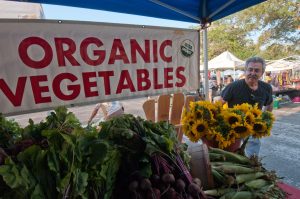Growth in Organic Agriculture

USDA photo by Lance Cheung.
The U.S. organic agriculture sector experienced significant growth in 2024, with sales of certified organic products reaching a record $71.6 billion—a 5.2% increase from the previous year. This growth rate more than doubled that of the overall food marketplace, which expanded by 2.5% during the same period. (OTA)
Organic food sales accounted for $65.4 billion, while non-food organic products contributed $6.2 billion. Produce remained the leading category, generating $21.5 billion in sales, with berries and bananas showing notable increases of 10.3% and 15.5%, respectively. The grocery category followed with $15 billion in sales, driven by consumer interest in clean-label and health-conscious products. (Organic Grower, GlobeNewswire, OTA)
Despite the robust demand, domestic organic production has not kept pace. Between 2019 and 2024, the acreage devoted to organic commodities in the U.S. declined by 6.8%. Consequently, the U.S. has increasingly relied on imports to meet consumer demand, with organic food import values rising to $5.7 billion in 2024. (Economic Research Service)
In response to these challenges, there is a renewed focus on bolstering domestic organic production. The USDA has introduced initiatives aimed at supporting farmers transitioning to organic practices, including financial assistance and technical support. These efforts aim to reduce reliance on imports, ensure the integrity of organic products, and meet the growing consumer demand for domestically produced organic goods. (SES, Inc.)
As the organic market continues to expand, these measures are crucial for sustaining growth and maintaining consumer trust in organic products.
Contract Dr. Angela K. Jackson, SDSPA Organic Ag Transition Advisor for technical assistance on your organic agriculture transition.